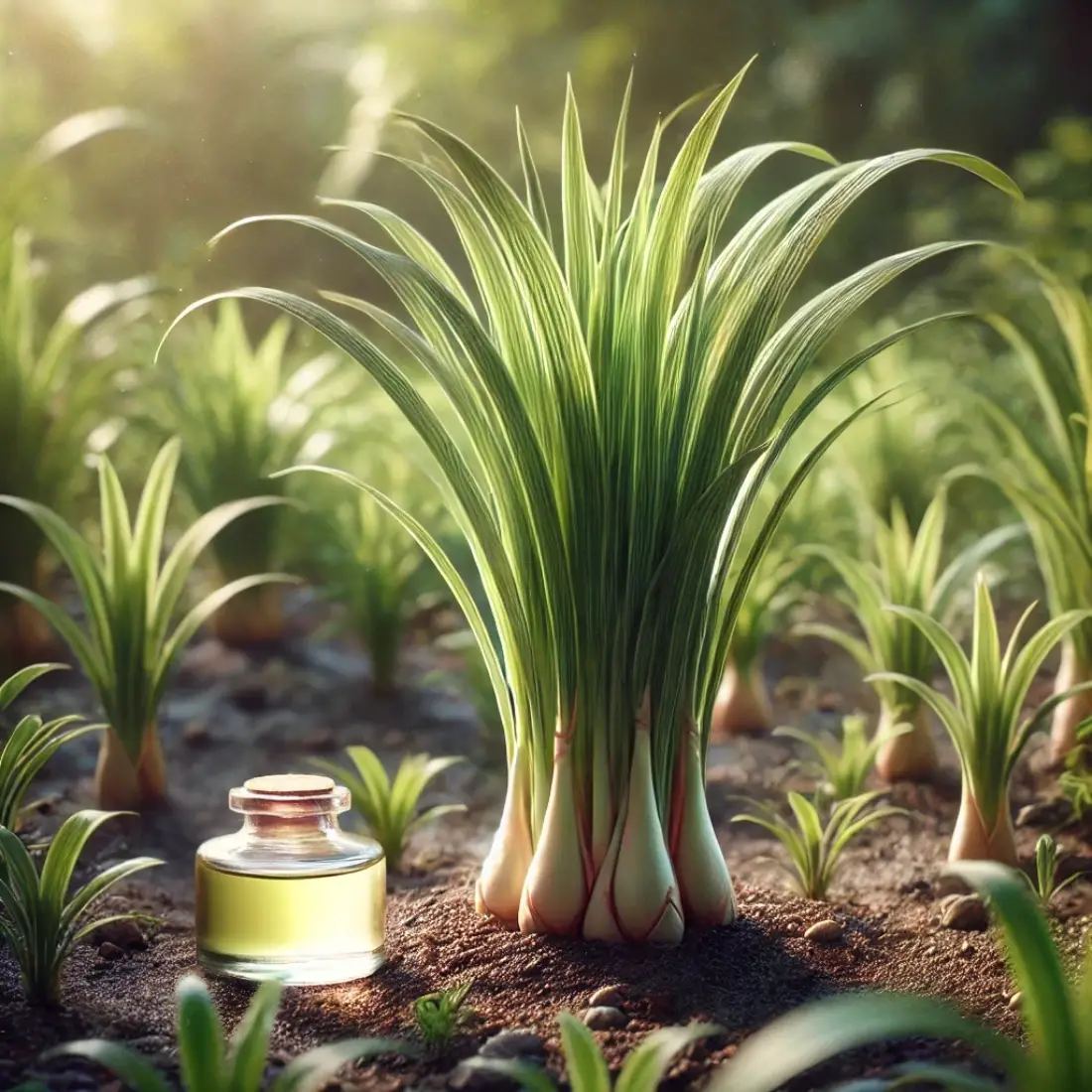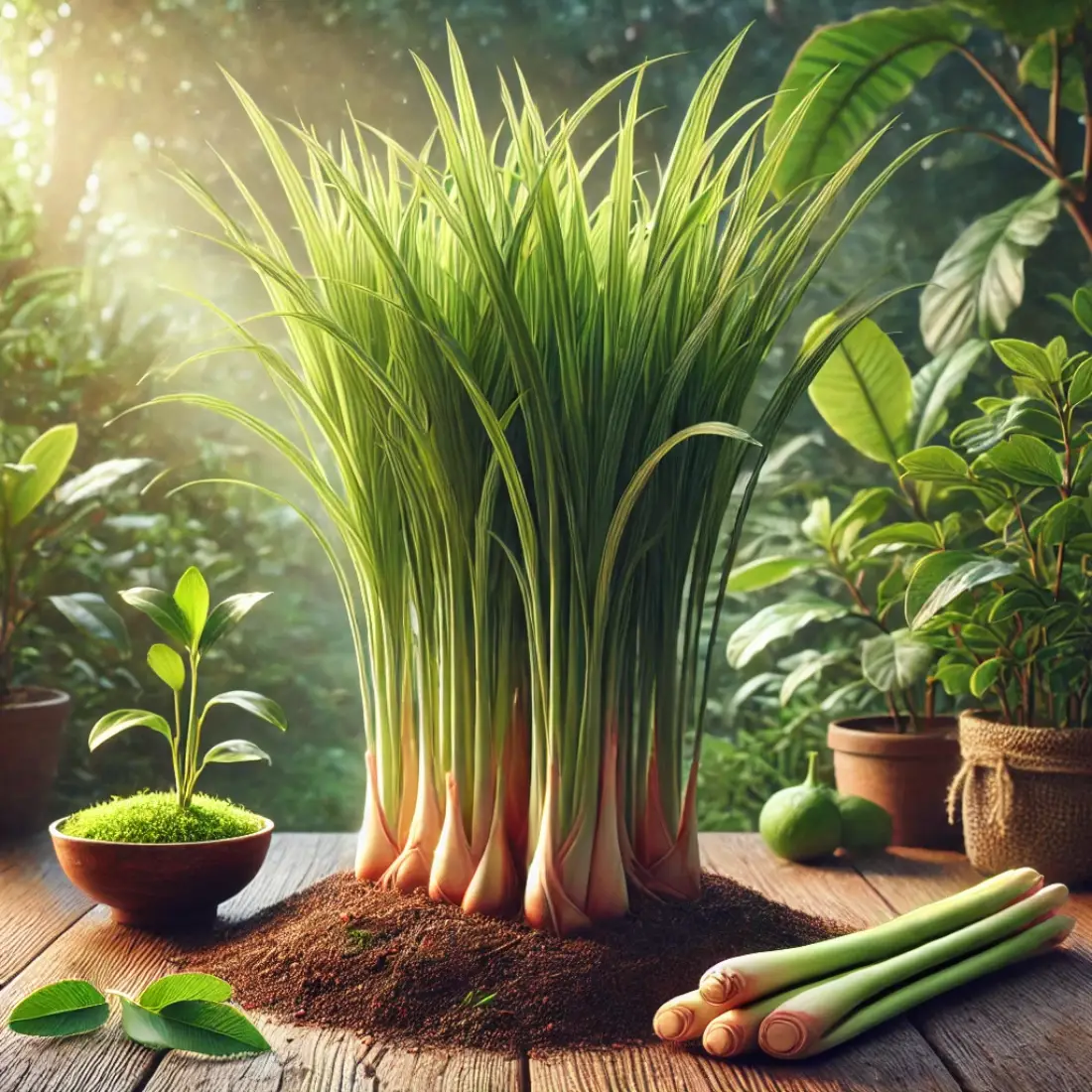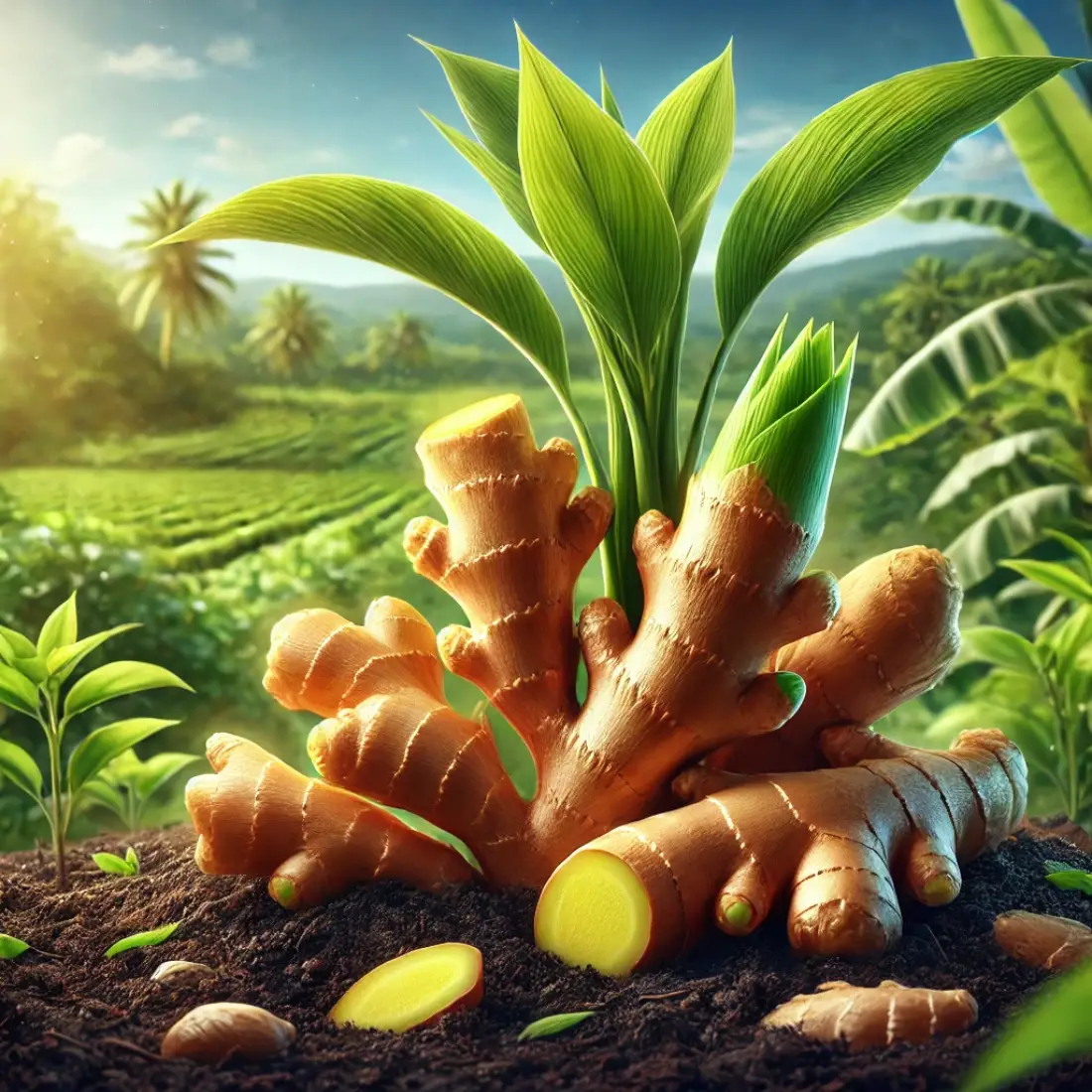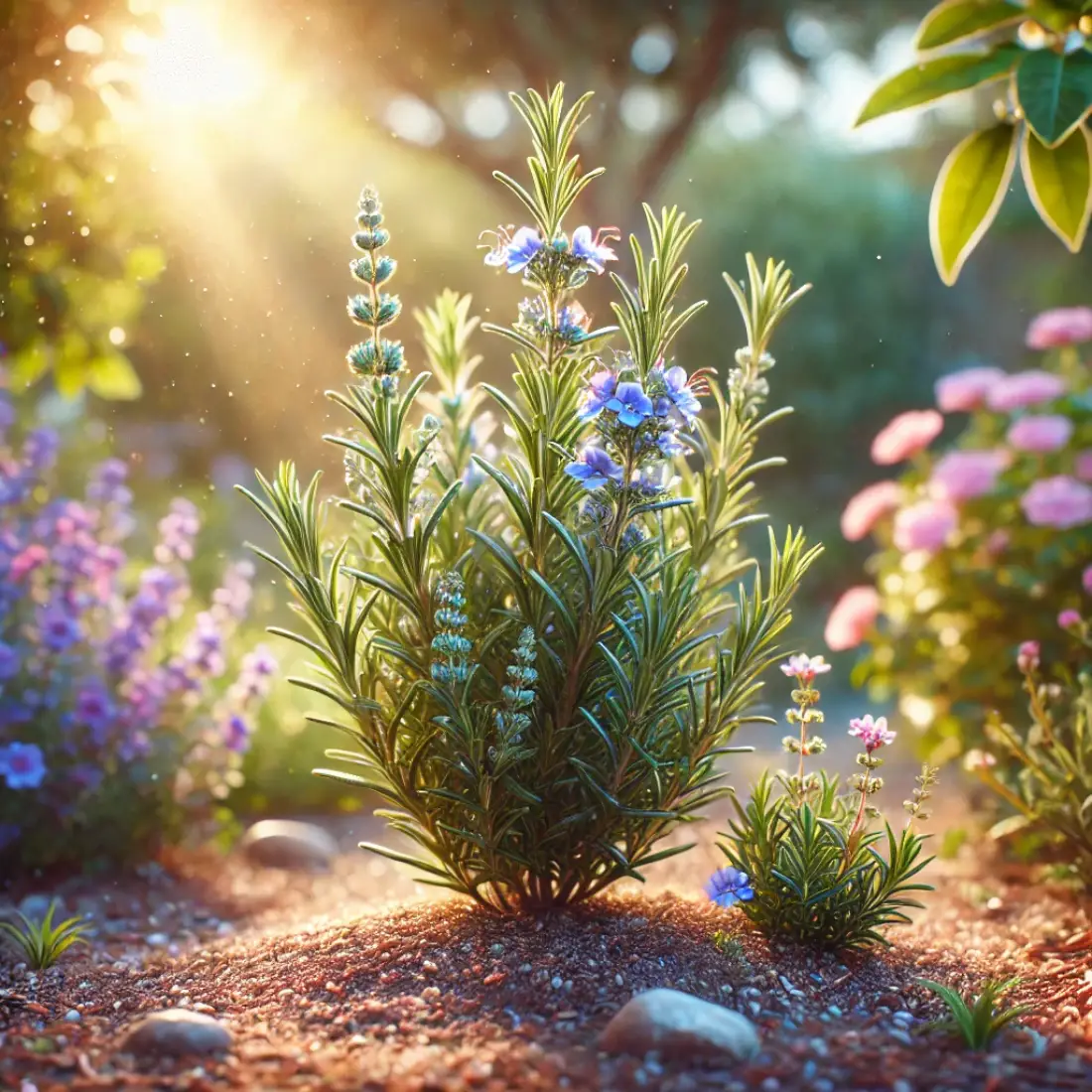Lemongrass (Cymbopogon citratus) is a versatile and aromatic herb that belongs to the grass family Poaceae. Known for its distinct lemony scent and flavor, lemongrass is widely used in culinary dishes, especially in Southeast Asian cuisine, where it adds a unique zest to soups, curries, and teas.
Beyond its culinary uses, lemongrass also boasts various medicinal properties, including anti-inflammatory, antifungal, and antibacterial benefits. Additionally, its essential oils are commonly utilized in aromatherapy for their calming and refreshing effects.
Selecting the Right Varieties of Lemongrass
Choosing the appropriate variety of lemongrass is crucial for ensuring optimal growth and desired uses. There are primarily two main varieties to consider:
East Indian Lemongrass (Cymbopogon flexuosus):

- Characteristics: Taller with slender, light green leaves.
- Uses: Primarily cultivated for its essential oil, which is rich in citral and used in perfumes, soaps, and aromatherapy.
- Growing Conditions: Prefers warmer climates but can be grown in temperate zones with proper care.
West Indian Lemongrass (Cymbopogon citratus):

- Characteristics: Shorter, with thicker stalks and a more robust lemon flavor.
- Uses: Widely used in culinary applications, particularly in Asian cuisine, for its aromatic stalks and leaves.
- Growing Conditions: Thrives in tropical and subtropical regions but can be grown in containers in cooler climates.
Tips for Selecting the Right Variety:
- Purpose: Decide whether you need lemongrass for culinary, medicinal, or aromatic purposes. West Indian lemongrass is better for cooking, while East Indian lemongrass is preferred for essential oils and aromatic uses.
- Climate: Consider your local climate. West Indian lemongrass is more tolerant of cooler conditions compared to East Indian lemongrass.
- Space: Ensure you have enough space for the variety you choose. East Indian lemongrass can grow taller and may need more room.
Optimal Growing Conditions for Lemongrass
Sunlight
- Lemongrass requires full sun exposure.
- Ensure the plant receives at least 6-8 hours of direct sunlight daily.
Temperature
- Ideal temperature range: 70-95°F (21-35°C).
- Lemongrass thrives in warm, tropical, and subtropical climates.
- Protect from frost and temperatures below 40°F (4°C).
Soil
- Well-draining soil is essential to prevent root rot.
- Soil pH: 5.0 to 8.0 (slightly acidic to neutral).
- Enrich the soil with organic matter or compost to enhance fertility.
Watering
- Keep the soil consistently moist but not waterlogged.
- Water regularly, especially during dry periods.
- Ensure good drainage to prevent water stagnation.
Humidity
- Prefers high humidity environments.
- If growing indoors or in a dry climate, mist the plant occasionally to maintain humidity.
Spacing
- Space plants 24 to 36 inches apart to allow for adequate air circulation and growth.
Fertilization
- Use a balanced organic fertilizer every 2-3 months during the growing season.
- Compost or well-rotted manure can also be used to enrich the soil.
Tips for Maintaining Optimal Conditions:
- Mulching: Apply mulch around the base of the plants to retain moisture and suppress weeds.
- Indoor Growing: If you live in a cooler climate, grow lemongrass in pots that can be brought indoors during winter. Ensure they receive adequate light and warmth.
- Container Growing: Use large pots with good drainage to accommodate the plant’s root system and provide ample space for growth.
Caring for Lemongrass
Proper care is essential to ensure the healthy growth and productivity of your lemongrass plants. Follow these guidelines to keep your plants thriving:
Fertilizing:
- Type: Use a balanced organic fertilizer or compost.
- Application: Fertilize every 2-3 months during the growing season (spring to early fall).
- Amount: Follow the recommended dosage on the fertilizer package to avoid over-fertilization.
Mulching:
- Purpose: Mulching helps retain soil moisture, suppress weeds, and regulate soil temperature.
- Materials: Use organic mulch like straw, grass clippings, or shredded leaves.
- Application: Apply a layer of mulch around the base of the plant, leaving a small gap around the stems to prevent rot.
Pruning and Maintenance:
- Pruning: Regularly remove dead, damaged, or yellowing leaves to promote new growth and improve air circulation.
- Dividing: Every 2-3 years, divide clumps to prevent overcrowding and maintain plant vigor.
- Cleaning: Keep the area around the plants free of debris to minimize pest and disease issues.
Pest and Disease Management:
- Common Pests: Watch for aphids, spider mites, and whiteflies. Use insecticidal soap or neem oil for control.
- Disease Prevention: Ensure proper spacing and air circulation to prevent fungal diseases. Avoid overhead watering to reduce leaf wetness.
- Organic Control: Use natural predators like ladybugs for aphids and maintain plant health to resist pests and diseases.
Overwintering:
- Outdoor Plants: In colder climates, mulch heavily around the base to protect the roots from freezing.
- Indoor Plants: If growing in containers, bring them indoors before the first frost. Place them in a sunny location and reduce watering.
Tips for Ongoing Care:
- Monitor Growth: Regularly check for signs of stress, such as yellowing leaves or stunted growth, and address issues promptly.
- Support: Larger plants may benefit from staking to prevent them from toppling over in strong winds.
- Harvesting: Regular harvesting encourages new growth. Cut stalks close to the base and use fresh or store for later use.
Harvesting Lemongrass
Proper harvesting ensures that you get the best quality stalks while promoting continued growth of the plant.
Timing:
- First Harvest: Lemongrass is typically ready for its first harvest 4-8 months after planting.
- Signs of Readiness: Look for stalks that are at least half an inch thick and 12-18 inches tall.
How to Harvest:
- Selecting Stalks: Choose mature, thick stalks for harvesting. These are usually found on the outer edges of the plant.
- Cutting Technique: Use a sharp knife or garden shears to cut the stalks close to the base, just above the soil line. Make a clean cut to avoid damaging the plant.
- Frequency: Harvest regularly to encourage new growth. Lemongrass can be harvested multiple times during the growing season.
Post-Harvest Handling:
- Cleaning: Remove any dead or damaged outer leaves from the harvested stalks.
- Storage: Fresh lemongrass stalks can be stored in the refrigerator, wrapped in a damp paper towel, and placed in a plastic bag. They can last up to 2-3 weeks.
- Freezing: For longer storage, lemongrass stalks can be frozen. Clean and cut them into desired lengths, then place in an airtight container or freezer bag.
- Drying: Lemongrass leaves and stalks can also be dried. Hang them in a well-ventilated area away from direct sunlight, or use a dehydrator. Once dried, store in an airtight container.
Tips for Successful Harvesting:
- Regular Harvesting: Encourage bushier growth by harvesting regularly. This also prevents the plant from becoming too tall and unmanageable.
- Plant Health: Ensure the plant remains healthy by providing adequate water and nutrients, especially after harvesting.
- Multiple Uses: Use the entire stalk, including the leaves, for various purposes like cooking, making tea, or extracting essential oils.
FAQs about Growing and Caring for Lemongrass
Can lemongrass be grown indoors?
Yes, lemongrass can be grown indoors in containers, provided it receives plenty of sunlight (at least 6 hours a day) and is kept in a warm, humid environment.
How often should I water lemongrass?
Water lemongrass regularly to keep the soil consistently moist but not waterlogged. Adjust the frequency based on the climate and season, increasing during hot, dry periods and decreasing during cooler weather.
What type of soil is best for growing lemongrass?
Lemongrass thrives in well-draining soil with a pH range of 5.0 to 8.0. Enrich the soil with organic matter or compost for best results.
Can I grow lemongrass from store-bought stalks?
Yes, you can propagate lemongrass from store-bought stalks. Choose fresh, green stalks with a firm base, and place them in water until roots develop before planting in soil.
How do I protect lemongrass in colder climates?
In colder climates, grow lemongrass in containers that can be brought indoors during the winter. Alternatively, mulch heavily around the base of outdoor plants to protect the roots from freezing.
How can I prevent pests and diseases in my lemongrass plants?
Ensure proper spacing and air circulation to prevent fungal diseases. Use organic pest control methods like insecticidal soap or neem oil to manage pests such as aphids and spider mites.
When is the best time to harvest lemongrass?
Lemongrass is ready for harvest 4-8 months after planting. Harvest mature stalks that are at least half an inch thick and 12-18 inches tall.
How do I store harvested lemongrass?
Store fresh lemongrass in the refrigerator wrapped in a damp paper towel, or freeze it for longer storage. You can also dry the leaves and stalks for later use.
Can I use lemongrass leaves for cooking?
Yes, lemongrass leaves can be used to add flavor to soups, teas, and broths. However, the leaves are tough and are usually removed before serving.
How often should I fertilize lemongrass?
Fertilize lemongrass every 2-3 months during the growing season with a balanced organic fertilizer or compost to promote healthy growth.










